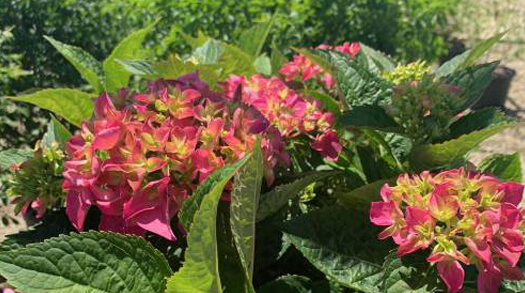There is no such thing as a totally maintenance-free landscape. Just like your lawn, your home’s landscape is susceptible to a variety of problems including weeds, diseases, pests, and the environment. All of these problems can be prevented and corrected with a little time and effort.
- Remove all leaves, weeds, and debris from the landscape.
- Perform a weekly/monthly check for insect and disease damage.
- Apply a fungicide to shrubs and trees in the spring as a preventative measure (repeat once a month as necessary).
- Install new mulch in mulch beds. Mulch conserves moisture, reduces weeds, regulates soil temperature, and gives your landscape a fresh look.
- Remove any diseased or damaged foliage.
- Deadhead any spent blooms. This will promote new blooms
- Apply insecticide to flowering shrubs and perennials in the summer months.
- Water in the morning. DO NOT water the leaves, this will scorch the foliage.
- Fertilize your plants to promote a stronger root system, healthier foliage, more blooms, and better resistance to insects and disease.
Perennials
The definition of a perennial is something that is continuing, recurring, or enduring. When we think of perennials for landscaping, we are often referring to flowering plants such as daylilies, coneflowers, daisies, salvia, lavender, asters, tulips, hostas, and ornamental grasses. Although each perennial will have more specific needs according to the species, location, and environment, here are some general rules to follow to care for your perennials.
- Water before 9 am using low pressure with the hose close to the soil.
- Deadhead any spent blooms.
- Remove any damaged or diseased foliage.
- Cut back foliage when the plant is dormant (late fall or early spring).
- Ornamental grasses can be left throughout the winter to provide shelter and food for wildlife.
- Fertilizer in the spring. *Follow all manufacturer guidelines.
Shrubs
Shrubs typically have woody stems and branches. Some shrubs such as azaleas, roses, and hydrangeas produce flowers while others such as juniper, arborvitae, and cypress do not flower but keep their foliage all year (Evergreens). There are still others that produce small insignificant flowers and keep their foliage all year such as the holly.
- Prune spring flowering shrubs such as lilacs and azaleas after they have flowered.
- Summer blooming shrubs should be pruned before April and can be pruned throughout the year to maintain a neat appearance.
- Evergreens can be pruned in the spring or fall.
- Fertilizer shrubs in the spring and fall. *Follow all manufacturer guidelines.
There are some shrubs that produce blooms on old wood such as hydrangeas. Removing the old wood on these shrubs can result in little or no blooms for a few years. Always do your research before pruning a particular variety of shrub or call a professional for assistance.
Trees
It can take several years for a tree to establish a strong root system. Each inch of caliper of a tree is equal to the number of years required to establish a root system. For example, a 2-inch caliper tree will require 2 full years after planting to establish a root system. Once the root system is established the tree should start showing signs of growth the following year.
- A transplanted tree needs 10 gallons of water per week per inch of caliper to become established.
- Spray flowering trees with a fungicide as the leaves appear and spray again 2-3 weeks later.
- Remove all suckers from around the trunk of the tree.
- NEVER install mulch against the trunk of a tree. Mulch retains water and this moisture will weaken the base of the trunk and attract insects and diseases.
- Fertilizer in the spring and again in the fall. *Follow all manufacturer guidelines.
- Inspect your trees on a regular basis for insect and disease damage.
- Remove any damaged or diseased limbs.
